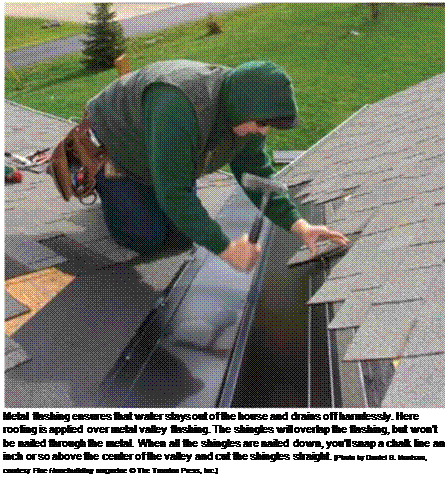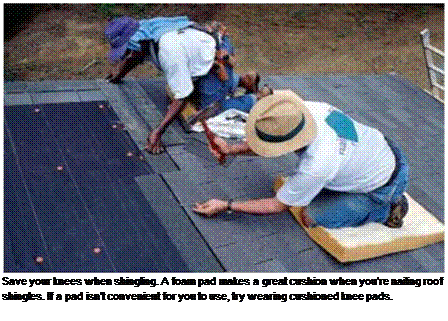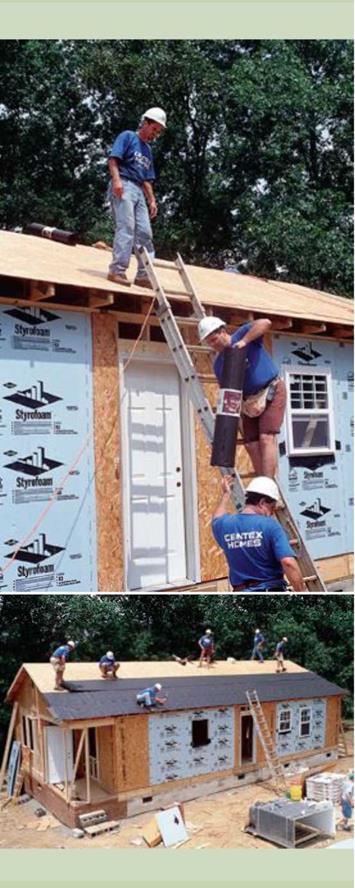Shingling across a valley
When a porch roof intersects the main roof at a right angle, a valley is formed. Shingles can be laid across a valley in different ways.
A woven valley is formed by weaving shingles across the valley, alternately overlapping from the main roof onto the porch roof, then vice versa. When properly done, a woven valley is watertight. Let each course of shingles overlap the valley by at least 12 in. and keep nails 8 in. or more from the centerline of the valley.


![]() An alternative to a woven valley is a closed, or cut, valley. To create a cut valley, let all shingle courses from the main roof lap across the porch valley by at least 12 in. Don’t alternate back and forth from the main roof to the
An alternative to a woven valley is a closed, or cut, valley. To create a cut valley, let all shingle courses from the main roof lap across the porch valley by at least 12 in. Don’t alternate back and forth from the main roof to the
It’s hard work to hand up sheathing panels.
We yell back and forth from the roof to the ground. Everyone should wear a hard hat.
With some experienced volunteers using nailers and
others hammering, the panels go down quickly.
After lunch, we shift from sheathing to shingling.
The scent of cut wood is replaced by the smell of asphalt; pretty soon, we’re hoisting shingles onto the roof.

 porch roof. After the shingles are laid on the main roof, lay the shingles on the porch roof so that each course laps over those on the main roof. Next, snap a chalkline down the center of the valley; use blue chalk, because most other colors stain. Cut the top layer of shingles at this chalkline. I use tinsnips or a utility knife with a hook blade to trim shingles to this line and to avoid cutting the lapped shingles below.
porch roof. After the shingles are laid on the main roof, lay the shingles on the porch roof so that each course laps over those on the main roof. Next, snap a chalkline down the center of the valley; use blue chalk, because most other colors stain. Cut the top layer of shingles at this chalkline. I use tinsnips or a utility knife with a hook blade to trim shingles to this line and to avoid cutting the lapped shingles below.






Leave a reply